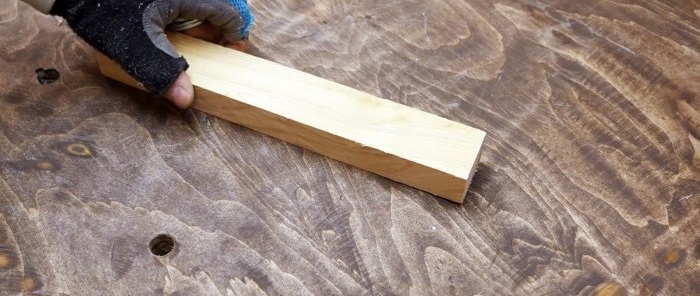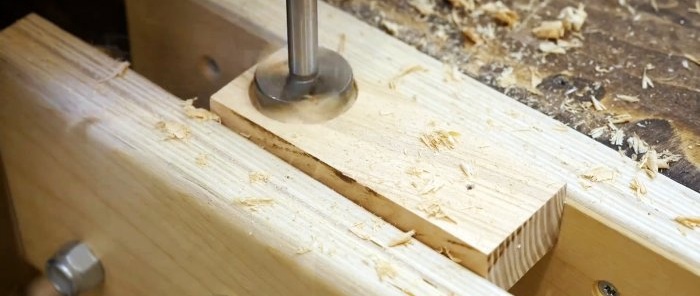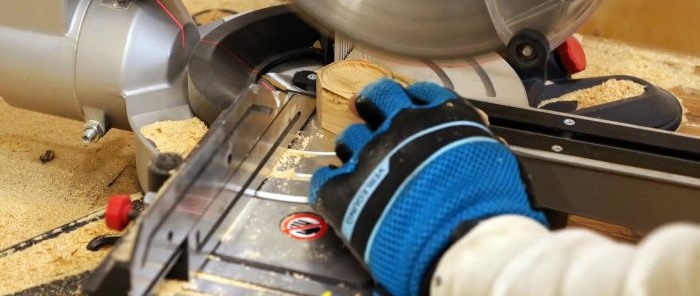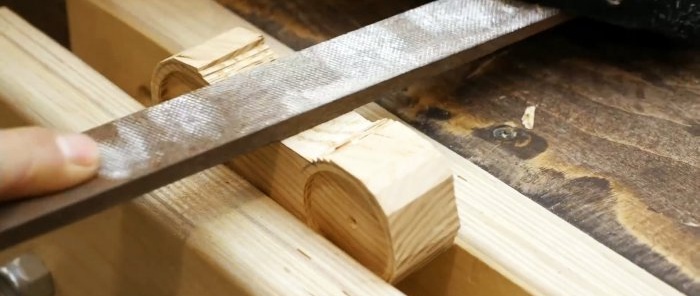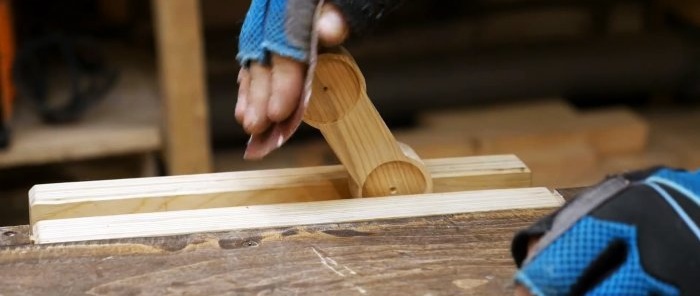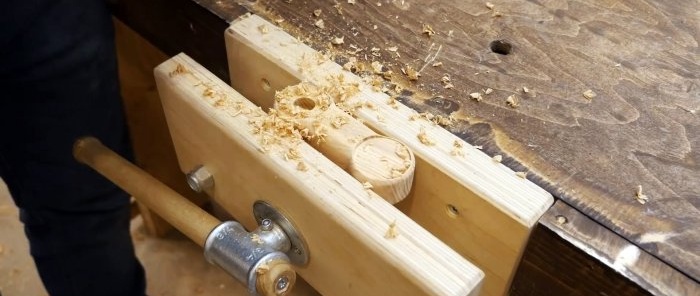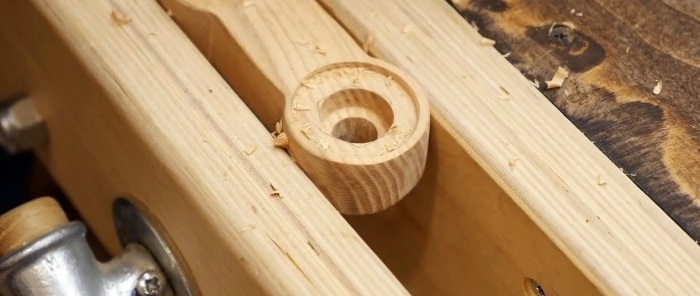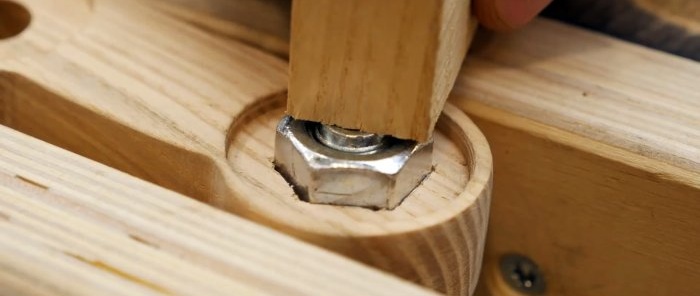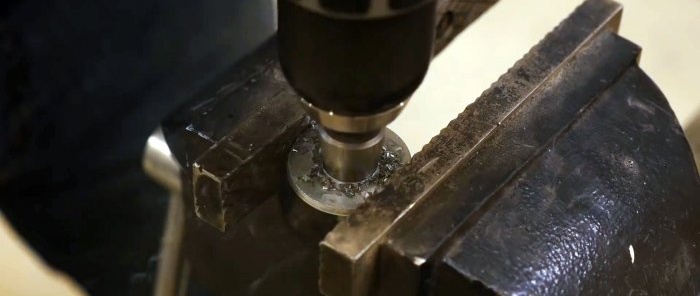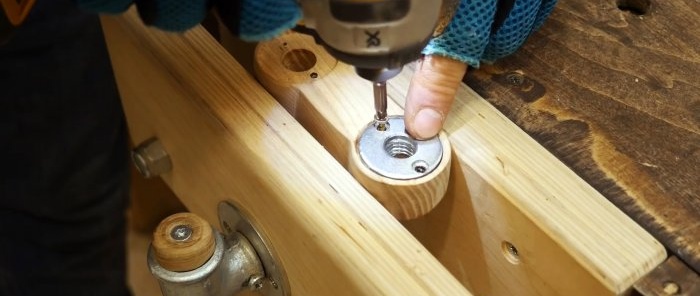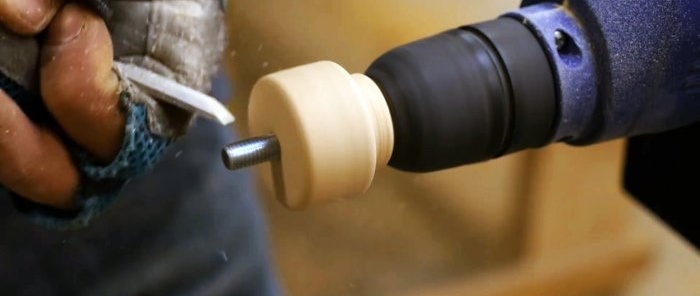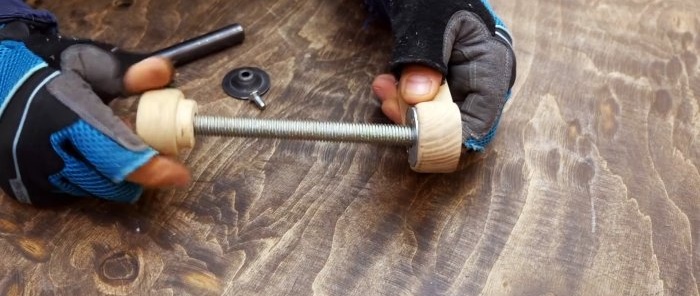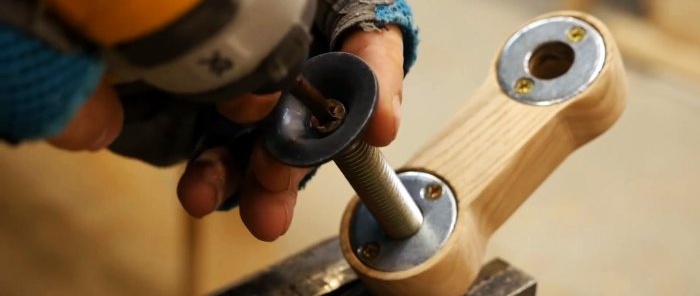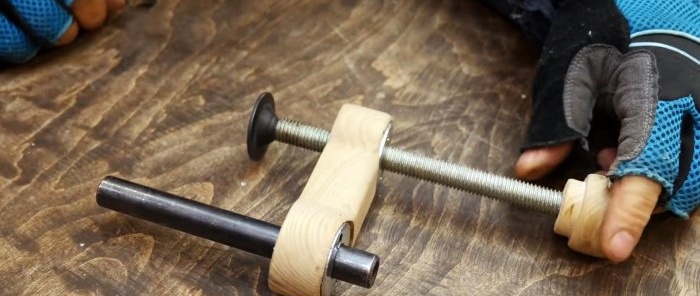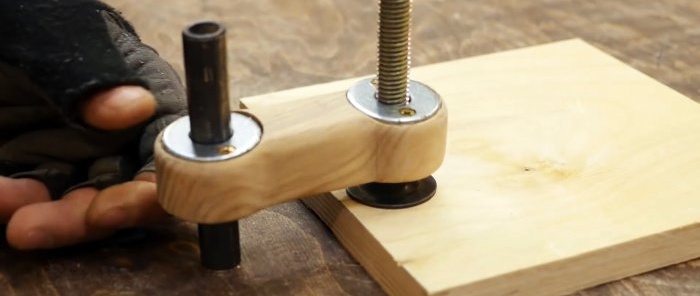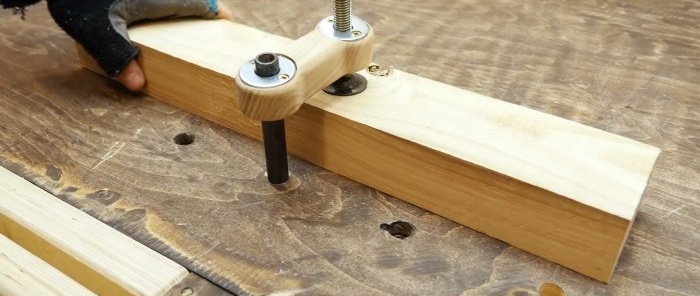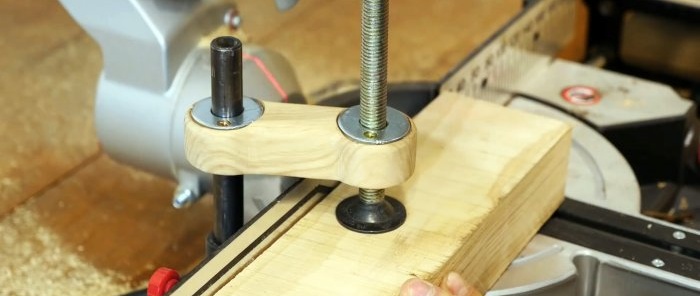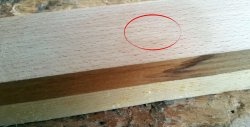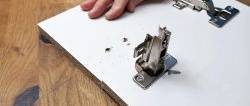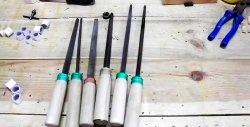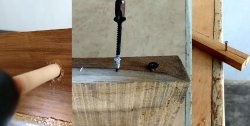How to make a convenient clamp from the remains of a board
To work on a carpentry workbench with perforations, it is very convenient to use clamps in addition to ordinary clamps. The latter, if desired, can be made with your own hands from available materials. With their help, it is possible to quickly and reliably fix parts of different sizes. Having a pair of such clamps makes it convenient to clamp and process long workpieces. For many types of work they are preferable to a vice.
A piece of 120x50x30 mm strip is used as a base for the clamp. Along its edges on all sides it is necessary to drill recesses with a Forstner drill in order to sink the washers into them.
Using a compass, you need to describe the recesses for the washers, stepping back from them by 2-3 mm. After this, connecting markings are made on the rail between the recesses. Next, the workpiece is cut to the marks and polished.
Through holes are drilled in the center of the recesses for the washers. A 14 mm drill is used on one edge, and an 18 mm drill on the second.
Then a sample is made on the smaller of them, into which an M14 nut is pressed.
After this, you need to glue the washers into the workpiece. In addition to glue, it is better to additionally tighten them with self-tapping screws. To do this, 2 holes are drilled in the washers. On the edge of the workpiece with a hole of 18 mm, pre-drilled washers to this diameter must be installed.
Next you need to prepare an M14 pin. For convenient work with a clamp, its length is 150-170 mm. A blind hole is drilled from the end of the stud and an M6 thread is cut into it.
A handle carved from wood is glued onto its other end.
Then the pin and handle are screwed into the clamp body. A support plate is pressed onto its edge with a cut internal thread using an M6 screw.
A piece of pipe with a diameter of 18 mm is inserted into the second hole in the clamp body. It is advisable to use a tube with thick walls. Its length is made the same as the studs or longer if you plan to work with large workpieces.
To use the clamp, you need to insert it with a tube into the perforation on the workbench table top. When tightening the thread, it will be locked in one position due to the skew and will reliably press the workpiece with the stop plate. A clamp of this design presses very reliably, so it can be used for drilling, planing and other types of processing of parts.
Materials:
- rail 50x30 mm;
- M14 washers enlarged – 4 pcs.;
- nut M14;
- pressure plate;
- M6 screw with countersunk head;
- M14 pin;
- pipe 18 mm.
Clamp manufacturing process
A piece of 120x50x30 mm strip is used as a base for the clamp. Along its edges on all sides it is necessary to drill recesses with a Forstner drill in order to sink the washers into them.
Using a compass, you need to describe the recesses for the washers, stepping back from them by 2-3 mm. After this, connecting markings are made on the rail between the recesses. Next, the workpiece is cut to the marks and polished.
Through holes are drilled in the center of the recesses for the washers. A 14 mm drill is used on one edge, and an 18 mm drill on the second.
Then a sample is made on the smaller of them, into which an M14 nut is pressed.
After this, you need to glue the washers into the workpiece. In addition to glue, it is better to additionally tighten them with self-tapping screws. To do this, 2 holes are drilled in the washers. On the edge of the workpiece with a hole of 18 mm, pre-drilled washers to this diameter must be installed.
Next you need to prepare an M14 pin. For convenient work with a clamp, its length is 150-170 mm. A blind hole is drilled from the end of the stud and an M6 thread is cut into it.
A handle carved from wood is glued onto its other end.
Then the pin and handle are screwed into the clamp body. A support plate is pressed onto its edge with a cut internal thread using an M6 screw.
A piece of pipe with a diameter of 18 mm is inserted into the second hole in the clamp body. It is advisable to use a tube with thick walls. Its length is made the same as the studs or longer if you plan to work with large workpieces.
To use the clamp, you need to insert it with a tube into the perforation on the workbench table top. When tightening the thread, it will be locked in one position due to the skew and will reliably press the workpiece with the stop plate. A clamp of this design presses very reliably, so it can be used for drilling, planing and other types of processing of parts.
Watch the video
Similar master classes
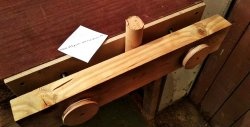
How to make a simple carpenter's vice for a workbench

How to simply and evenly enlarge the hole in a washer

We clean the catch with a screwdriver right while fishing in a couple of minutes

Homemade quick-release vise

Lightweight, cheap DIY vise

A homemade marking thicknesser is an indispensable thing for a carpenter,
Particularly interesting
Comments (0)

